
/ Blog
November 6, 2020
Designated Heritage: Saving the Past for the Future!
To designate or not to designate, that is the question! Heritage designations are headline news in Winnipeg, but they are all too misunderstood. Developers decry them, claiming all future plans for their building are being sabotaged, heritage supporters celebrate them, seeing an important part of our history being saved, while politicians are caught in the middle, often endlessly delaying their decision whether or not to designate. Why is recognizing and celebrating our built heritage so fraught with controversy? Over 42 years ago after many years of destruction, Winnipeggers took to the streets in the middle of winter with signs and bullhorns to demand our historic buildings be saved. Subsequently Heritage Winnipeg was formed as a watchdog organization thanks to the power of the people. How could something that was once so hard fought for, now be seen as a hindrance to progress? The problem is the aura of mystery surrounding heritage designations- who, how and why they are bestowed upon a building and what do they mean for a building’s future, are puzzling to most. Without answers, people are prone to assuming the worst, that a heritage designation is a death sentence handed down by unrealistic, unsympathetic heritage enthusiasts that want nothing more than to see every old building sitting empty, and frozen in time. But this could not be farther from the truth. So be confused no more, and come to appreciate why heritage designations are an important tool in conserving our built heritage, sustaining our environment, supporting our economy, promoting diversity and helping improve our quality of life!
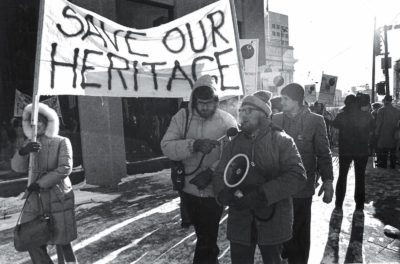
In 1978 David McDowell (holding bullhorn) along with other heritage supporters protested the proposed demolition of the Bank of Hamilton and the Bank of Commerce, marking the start of the heritage movement in Winnipeg. David McDowell was also President of Heritage Winnipeg several times over two separate decades.
Source: Heritage Winnipeg
Firstly, Heritage Winnipeg does not designate heritage buildings. As a non-profit charitable organization separate from the City of Winnipeg, we advocate building by building for the potential designation of our built heritage and subsequent economic viability, but the actually act of designating a building is in the hands of government. All three levels of government can designate a building, but they each use different guidelines which have different ramifications for the future of the building. Buildings can be designated by one, two or three levels of government, with designation from one level having no impact on the chances of it being designated by another level. There are currently ten buildings in Winnipeg that are designated by all three levels of government; the Canadian Pacific Railway Station, Empire Hotel facade, Fort Garry Hotel, Gabrielle Roy House, Grey Nuns Convent, Dalnavert House, Pantages Playhouse Theatre, Ralph Conner House, Ukrainian Labour Temple and the Walker Theatre.
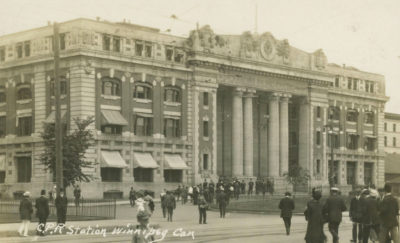
The 1905 Canadian Pacific Railway Station at 181 Higgins Avenue, seen here in the early 20th century, is designated by the federal, provincial and municipal governments.
Source: PastForward
Designation by the federal government sounds very important and official, but it is purely commemorative and the name of the building is added to the Directory of Federal Heritage Designations. This is a list of “all places, people and events of national historic significance that have been designated by the Canadian government” (Parks Canada). It includes over 3,600 buildings, railway stations, lighthouses, districts, people and events designated through various programs. Each designation includes an informative web page where you can learn about the building, place, person or event and an explanation of its heritage value. Perhaps because this list is so extensive, covering not just tangible but intangible heritage, it cannot afford any legal protection, allowing buildings on it to be freely altered or demolished. Just consider the Exchange District, designated a national historic site in 1997 for its crucial role as an economic hub at the turn of the 20th century and for the architecturally significant streetscapes within its boundaries. As important as this designation is as an acknowledgement of the historical importance of the Exchange District, it does very little to stop demolitions for vacant lots, surface parking or insensitive redevelopment.
The Province of Manitoba designates sites that are significant to Manitoba’s pre-historic or historic development, people and cultures or natural history. These Provincial Heritage Sites are designated under the Heritage Resources Act and require a heritage permit from the City of Winnipeg before they can be altered or demolished. The point of requiring a heritage permit is to ensure all “renovations or improvements made to a site or structure are sympathetic to its architectural and/or historic nature” (Manitoba Government). There are currently 126 provincially designated sites in Manitoba with 33 in Winnipeg, most of which are also municipally designated. Although this is an improvement over federal designations, it protects a very limited number of buildings in a large province and does not ultimately prevent their demolition if neglected.
The City of Winnipeg first introduced its Heritage Bylaw on February 2, 1977. Designed for “the conservation and preservation of buildings of an architectural and historical interest in the City of Winnipeg” (City of Winnipeg Historical Buildings Committee), the intentions were good but the execution was weak. After a much needed amendment in 1978, the first five buildings, the Drake Hotel, House of Comoy, Hochman Building, Exchange Building and the Utility Building were designated on June 18, 1979. In the early part of the 21st century all five buildings were successfully integrated into the Red River College Princess Street Campus, thanks in part to the City of Winnipeg’s Heritage Tax Credit incentive and heritage advocates like Heritage Winnipeg. Today historic structures in Winnipeg can be nominated for designation by the owner, or the Director of Planning, Property and Development Department excluding residential properties. As the owner is required to pay a fee to nominate their building this becomes an impediment for them to peruse designation. Additionally there seems to be a bias against designating residential properties, and also questioning what would the motivation be for the Director to initiate a nomination?
After research on a building is initiated and completed by the Historical Buildings and Resources Committee (HBRC), the recommendation is provided to the Planning, Property and Development Department and a subsequent Administrative report with recommendations is provided to the Standing Policy Committee on Property and Development, Heritage and Downtown Development. Delegations can be heard for both in favour and against designation, with three options for a nominated building. If there is no opposition to the designation it is finalized at this committee. If not, it must go to the Executive Policy Committee and full Council for a final decision. At worst it can be determined to be not architecturally or historically significant and receive no designation. It can also be deemed to have significance, but not enough to warrant any legal protection, so it is placed on the Commemorative List of Historical Resources. This is a essentially a list of important historical buildings that have no protection regarding major alterations and possible demolition. Unfortunately this gives a false sense of protection and in many cases the public’s perception is that they are protected. Finally there are the lucky buildings that make it on the List of Historical Resources. These are the only officially municipally designated buildings, legally protected from demolition and the alteration of their exterior and interior character defining elements. There are currently over 350 buildings on this list which might seem like a lot, but in 2014 the list was revamped which saw over 200 historically significant buildings unceremoniously removed without any explanation.
Municipally designated buildings in Winnipeg are not meant to be museums, kept behind glass and unchanged for centuries. The are intended to be thriving structures full of life, ready to be adapted to suit their community’s needs. Part of the designation processes is to identify character defining elements, which are the part of the building that cannot be removed. Beyond these elements, building owners are free to make sympathetic changes to their building so it can better serve their needs. Winnipeg is full of examples of adaptively reused designated heritage buildings, where creative solutions have been employed to ensure the character defining elements are preserved, while the building is made functional and economical viable. Heritage Winnipeg follows and lobbies the city to ensure that recommendations are implemented and reasonable, striking the best balance between conservation and functionality. This is of the utmost importance because buildings must be occupied and functional to remain viable – a vacant building already has one foot in the grave, regardless of its designated status.
While all building owners are expected to maintain their building, whether it is 100 years old or brand new, the city recognizes that designated heritage buildings often need expensive conservation efforts that go above and beyond standard maintenance. To help facilitate these, there are various grant programs available to designated building owners, including the Gail Parvin Hammerquist Fund City-Wide Heritage Program. Unfortunately some building owners think that if their building is designated, the city should be responsible for all their maintenance costs? But basic regular maintenance is necessary regardless of it age. Worse still are those who neglect their building for decades and then argue about the cost of taking care of it once it is designated is too high? As though the city should provide most of the funding when they have spent very little to maintain it. Basic maintenance is part of being a responsible building owner and good community member. It is not special to heritage and we should not reward these types of building owners that purposely let their properties deteriorate.
Another argument that often comes up when buildings are nominated for designation in Winnipeg is about the future potential. What if the building was to be torn down and replaced with something shiny and new and how does that affect other adjacent property owners? What if the building owner had grand plans for redeveloping the building that could not possibly be accomplished under the regulations of a heritage designation? This argument holds no merit and should immediately be dismissed. Justifying a heritage designation is about assessing the historical, architectural and cultural merit of a building, not pitting the profitability of the building against some hypothetical future project. But sadly that is exactly what some heritage buildings in Winnipeg have been loosing out to. The Reliable Service Station and the Public Safety Building have both been demolished not because of the lack historical or architectural significance, but because the city agreed it would be easier to replace them with something new and potentially more profitable.
How can we possible justify demolishing our built heritage when Winnipeg is one of the surface parking lot capitals of the world? Our downtown alone is 20% surface parking lots, all space prime for new developments but instead jealously guarded because of how lucrative they are. The McLaren Hotel and the Somerset Building on Portage Avenue both made the argument that they had potential grand redevelopment plans that could not be accomplished with a heritage designation. The owners of the Somerset Building succeeded with their potential development proposal landing their building on the Commemorative List. Luckily no one believed the McLaren Hotel, which is currently in disrepair, was suddenly going to become the pinnacle of social housing, and so it was officially designated, but strangely several exterior facades were eliminated from protection. People who believe structurally sound designated heritage buildings cannot be adaptively reused potentially lack creativity, or refuse to consider anything but the cheapest and quickest option. Disposability is not generally viewed as a desirable outcome for environmental sustainability.
Further arguments against heritage designations include that it is infringing on private property rights. The reality is there are plenty of bylaws that “infringe” on private property rights and our lives are all better for them. Nobody wants a toxic waste dump opening next door to them any more than they want a hundred storey apartment building towering over them. Bylaws help ensure we can all live respectfully together, without your neighbour doing whatever they please on their property. If you do not want to deal with some of limitations or compromises of an important heritage building then simply do not own one. Urban sprawl is rampant in Winnipeg, providing plenty of brand new buildings with no history or character. Two of the most recent buildings being considered for designation are the Monarch Life Building and the Eaton Company Mail Order & Catalogue Building. Both currently owned by an agency of the Crown, municipal designations would currently have no major impact on them, as ultimately the province still has the power to demolish them. But the argument for their designation is the same for those owners who promise to take really good care of their buildings, one day someone else who does not care about heritage conservation might own them? If those buildings are sold, a heritage designation will help ensure that they are protected for future generations.
Finally, Winnipeg’s latest development in heritage designation comes in the form of Heritage Conservation Districts (HCD). Recognizing that in some cases, the whole is greater than the sum of its parts, and that HCD’s in mature neighbourhoods strive to conserve not just a single building, but an entire historic area whether commercial or residential. It is different from an individual heritage designation in that it is focused on conserving the streetscapes and only what is visible from the street – if you want to renovate the interior of a house in an HCD, it does not stand in your way. If you want to build a three car garage in your front yard in an HCD, you would have to convince the city that it is in keeping within the character of the neighbourhood. So not impossible, but also not a given but it also allows the neighbourhood to participate in the final decision. The result is heritage advocates are very pleased with this legislation while others might feel that their private property rights are being infringed on. After the legislation was enacted in 2018, Armstrong’s Point became the first HCD in Winnipeg. Although HCD’s are common in other cities, in Winnipeg it is costly and a daunting task for a community to nominate themselves. Considering the initial controversy in nominating a second area, Crescentwood, it seems unlikely any other HCD’s will be nominated anytime soon.
Owning built heritage is a privilege, you are being trusted to be a steward of your community’s history. These buildings are a tangible connection to our past that pull at out heartstrings and make us feel like we belong, create socioeconomically diversity, human scale neighbourhoods that encourage active transportation and improve our quality of life. Maintaining and using them ensure our landfills are not being filled up with construction waste and that more resources are not being spent on something new that will only last for a few decades. Along with providing good local jobs for skilled workers and they are also popular backdrops for the film industry and are a huge draw for tourists. No one invites people to Winnipeg because they are excited to show off the latest iteration of urban sprawl where all the houses look so similar that not only will quickly become lost, you might not even remember what city you are in? You invite people to Winnipeg to explore the Exchange Distinct, spend a day at the Forks or wander through Assiniboine Park. It is these unique historic places filled with unique character and colour, a mix of people and offerings, that truly tempt you to get out of your car, hit the pavement and take it all in at a slower pace. We need to celebrate and conserve the built heritage that exists today, not just with plaques and lists, but with sound legislation, financial support and by working together to encourage rehabilitation and adaptive re-use. Heritage designations are just one important tool in the kit that can be used in the quest to save our built heritage, and although it is not a perfect solution it is certainly an integral part of protecting it!
THANK YOU TO THE SPONSOR OF THIS BLOG POST:

Written by Heritage Winnipeg.
SOURCES:
Directory of Federal Heritage Designations | Parks Canada
Eliminate Surface Parking Lots | Downtown Winnipeg BIZ
Exchange District National Historic Site of Canada | Parks Canada
Heritage Conservation Districts | City of Winnipeg
Heritage Resources Act | Manitoba Government
The Heritage Resources Act | Manitoba Government
Historic designations in Canada | Parks Canada
Historic Sites of Manitoba | Manitoba Historical Society
List of Historical Resources | City of Winnipeg
Municipally Designated Sites in Winnipeg | City of Winnipeg
Protection of National Historic Sites | Parks Canada
Provincial Heritage Sites | Manitoba Government
The Year Past 1979 | City of Winnipeg Historical Buildings Committee






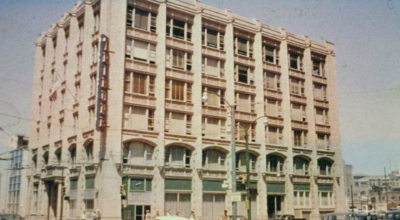

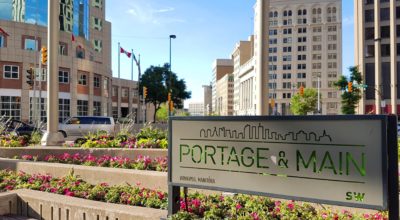
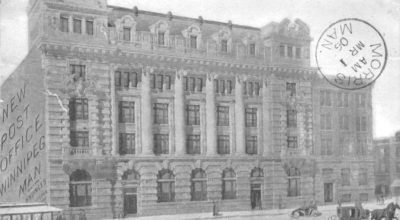

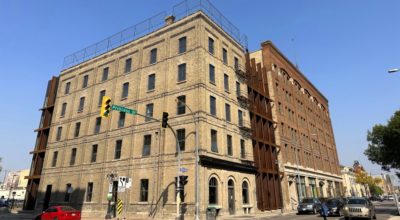
As a owner of a home that was once protected and is now only on the Commemorative List of Historical Resources, I want to say “Bravo for an excellent article.” We were one of the 200 properties that were “unceremoniously removed without any explanation.” We have maintained our historic home at our own cost for 20 years and we have been happy to do so for the good of our city. We were told that we could challenge the decision if we waited five years and paid a $500 fee for application. What the city failed to understand is that we wanted to continue to be on the list for the benefit of future generations and not for our own benefit. How tragic it would be for us to sell our house and the next owner cares little of its significance and then proceeds to tear it down or alter it beyond recognition.